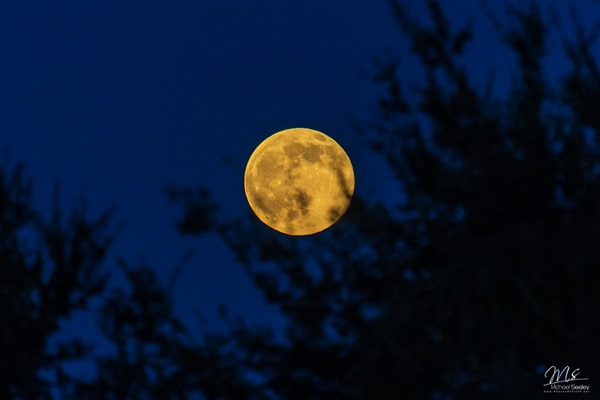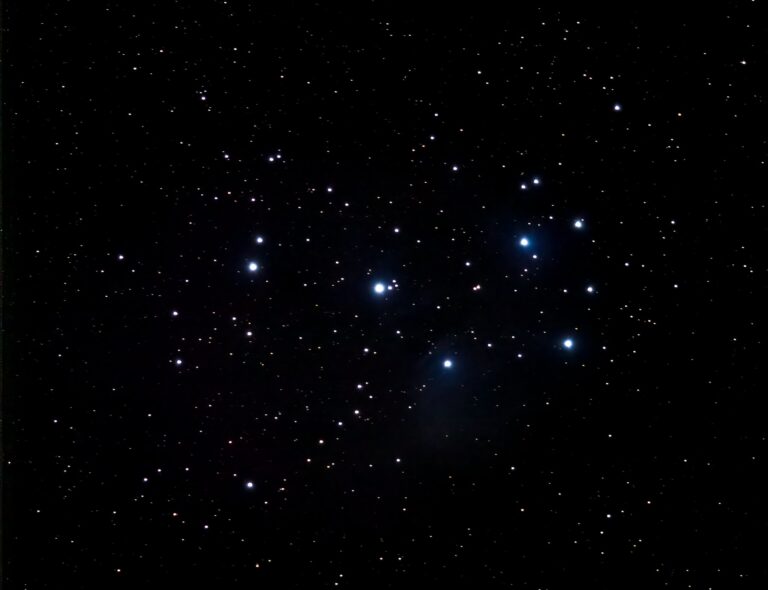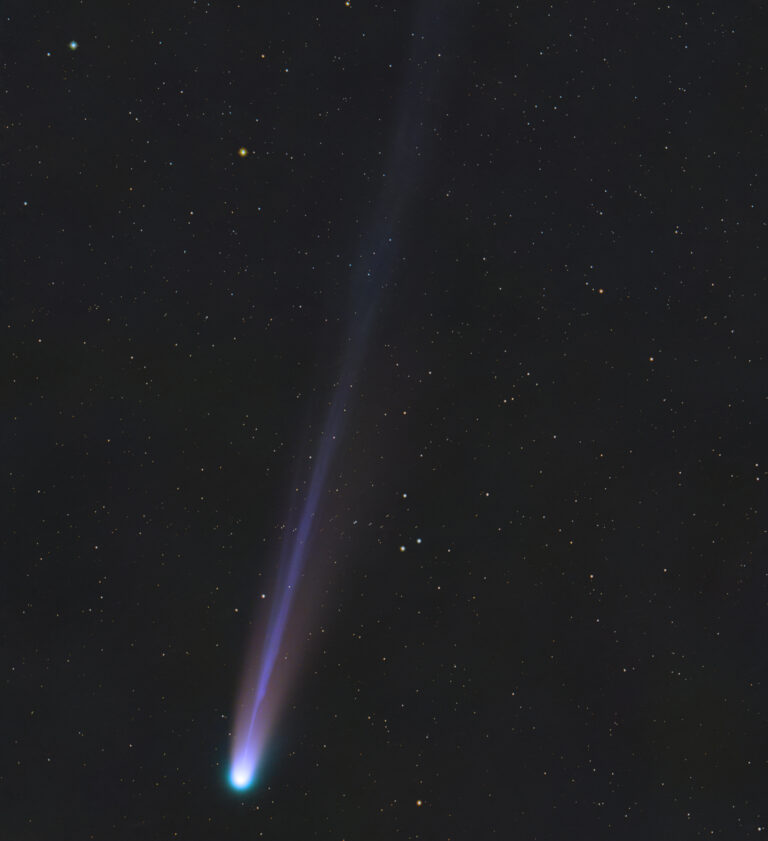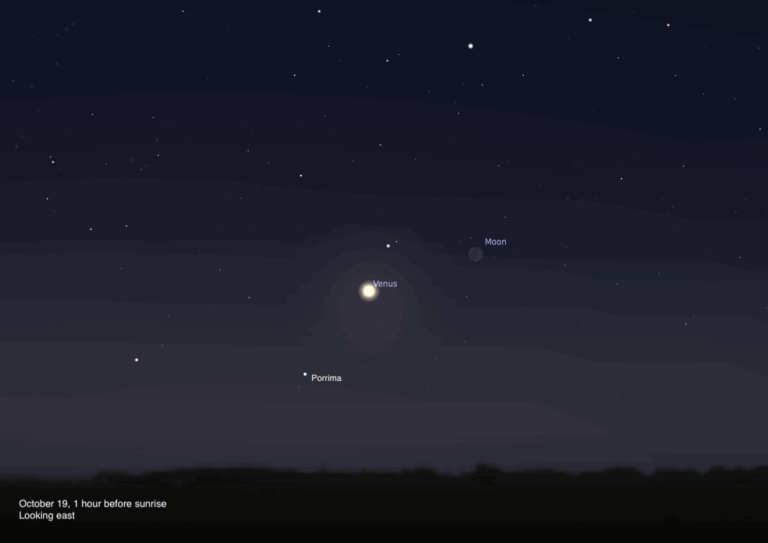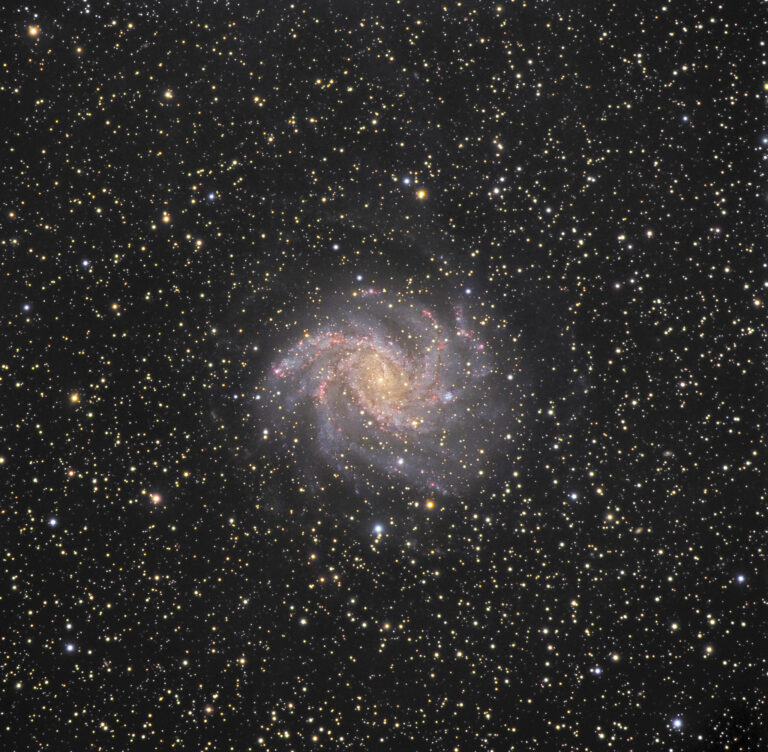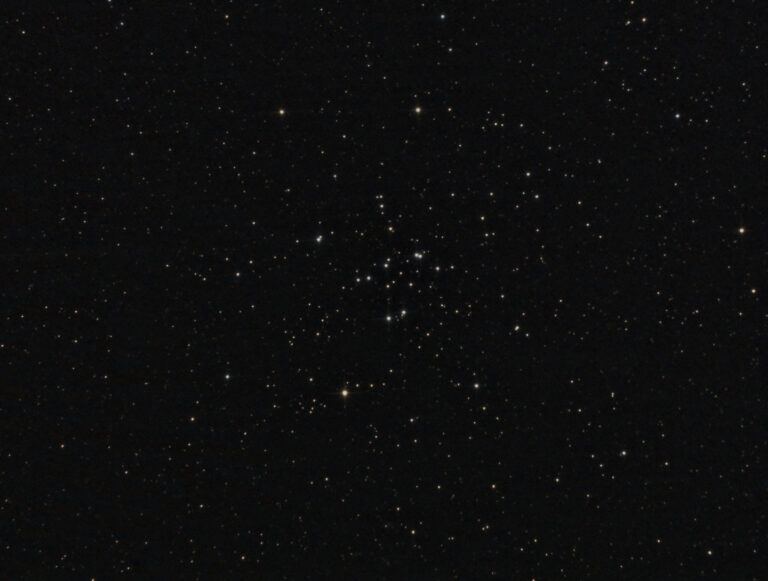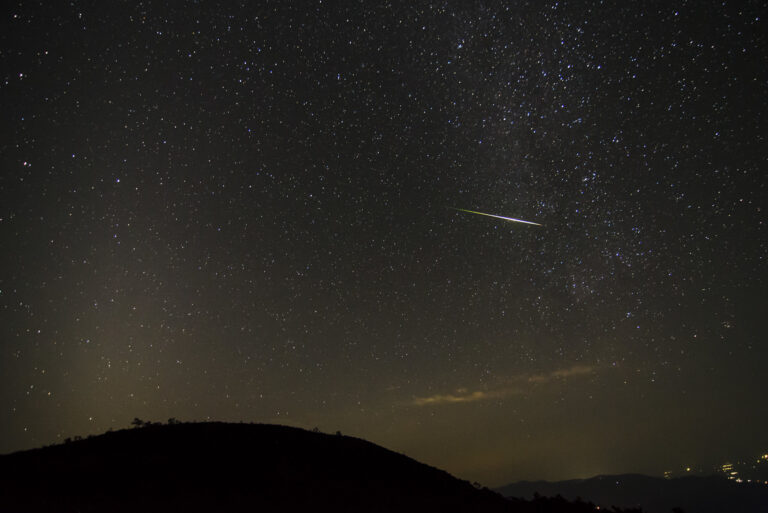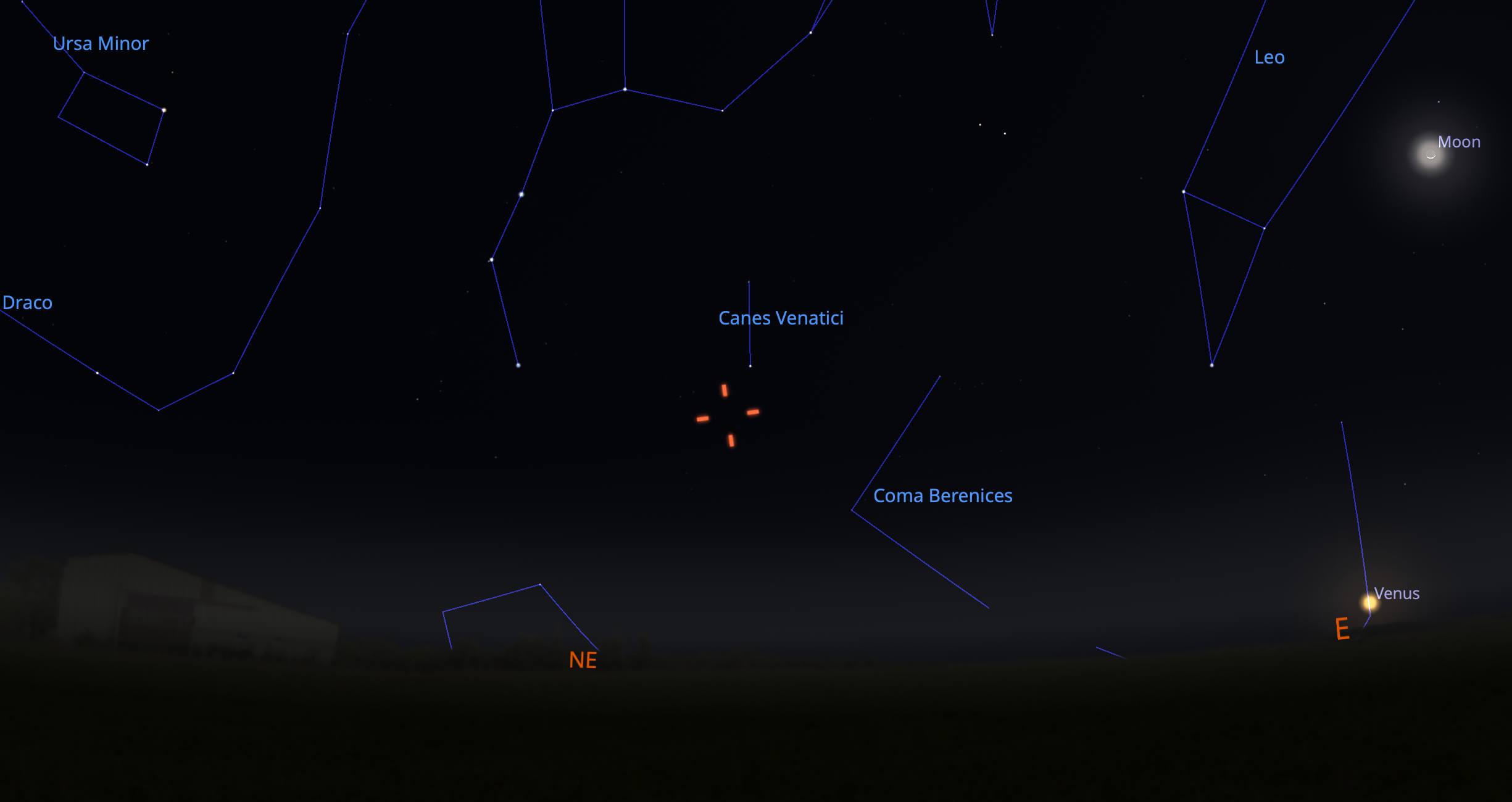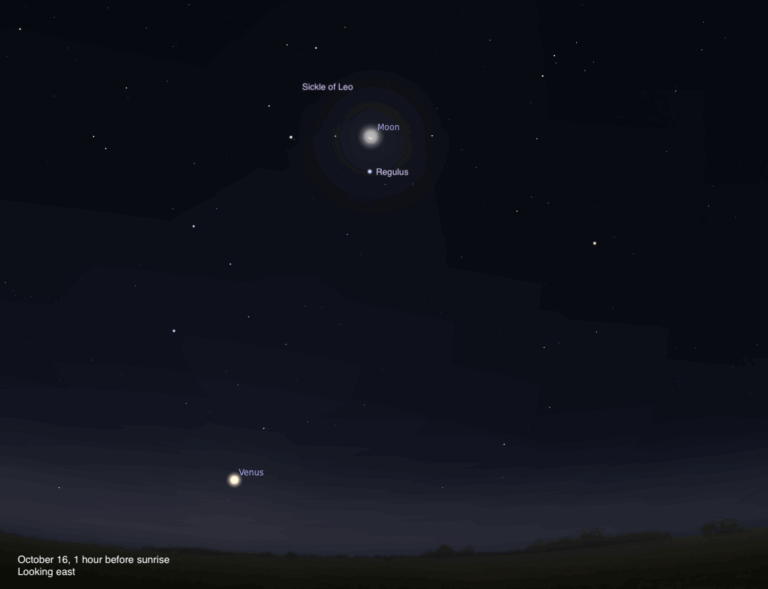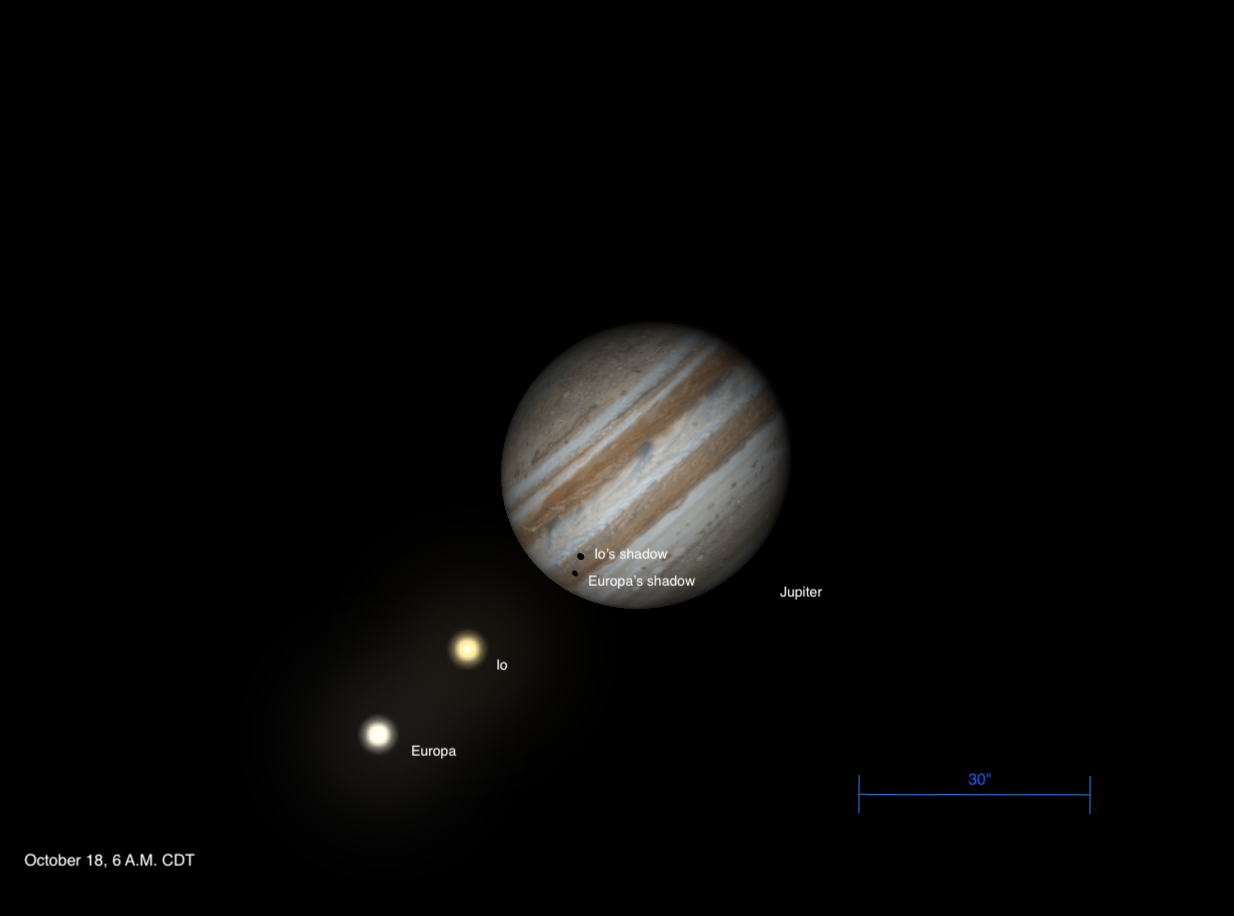
Key Takeaways:
- On October 17th, early morning observations of Jupiter will feature transits of Io's and Europa's shadows across its cloud tops, with specific timings varying by time zone.
- A telescopic view of Jupiter on this date will reveal all four Galilean moons strung out to its east.
- The subsequent morning will present a conjunction of the waning crescent Moon (4% illuminated) and Venus (94% illuminated, gibbous phase) in the predawn sky within the constellation Virgo.
- Below this conjunction, the 3rd-magnitude double star Porrima (Gamma Virginis), with components approximately 4” apart, will be observable through a telescope.
Looking for a sky event this week? Check out our full Sky This Week column.
October 17: Catch open cluster M34
Jupiter stands high in the sky early this morning, ripe for viewing as two of its four Galilean moons chase their shadows across the cloud tops.
By 6 A.M. EDT, the gas giant stands nearly 60° high in the southeast, below (and outshining) the two bright stars marking the heads of Gemini the Twins. Zoom in on the planet with a telescope to see all four Galilean moons strung out to the planet’s east. Io is closest to the planet; next is Europa, then Callisto, with Ganymede farthest east.
Make sure you’re ready about half an hour later, as Io’s shadow is first to appear on the southeastern limb at 6:36 A.M. EDT. Europa’s shadow appears six minutes later. Io reaches the limb and starts to transit at 6:52 A.M. CDT, as twilight is starting to brighten skies across the Midwest. The western U.S. will be able to watch as Callisto’s shadow appears at the southeastern limb at 6:07 A.M. PDT (note the time change). Twelve minutes later, Europa begins its transit at 6:19 A.M. PDT, with Io finally beginning to approach the southwestern limb.
Sunrise: 7:14 A.M.
Sunset: 6:15 P.M.
Moonrise: 4:25 A.M.
Moonset: 4:58 P.M.
Moon Phase: Waning crescent (5%)
*Times for sunrise, sunset, moonrise, and moonset are given in local time from 40° N 90° W. The Moon’s illumination is given at 10 P.M. local time from the same location.
Tomorrow morning, The Moon and Venus hang close together in the predawn sky, sharing the sky in the constellation Virgo. An hour before sunrise, look east to spot Venus, the brightest point of light, blazing at magnitude –3.9 nearly 7° above the horizon and climbing. The delicate crescent Moon lies to its upper right, just 4° to the planet’s west.
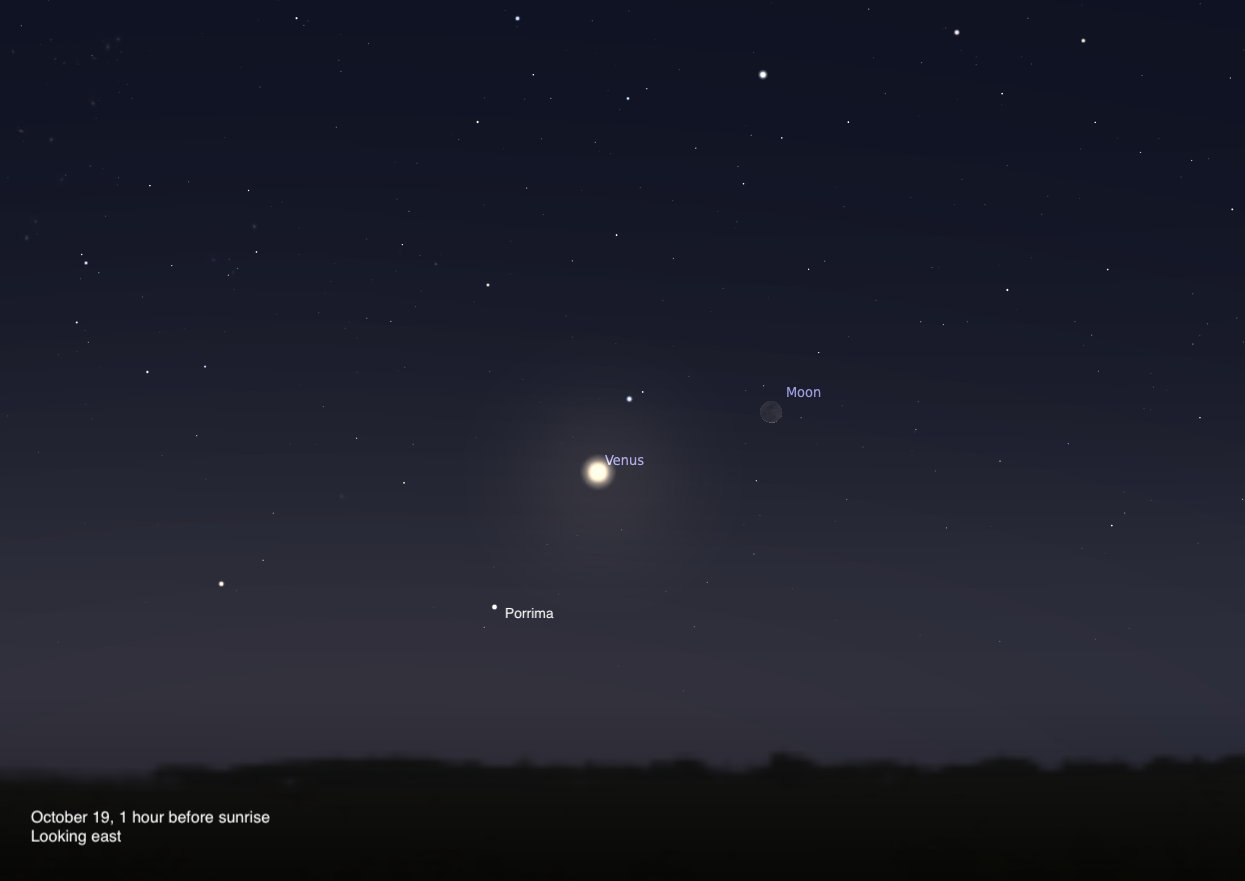
Through a telescope, Venus appears 94 percent lit, its gibbous phase opposite the Moon’s thin crescent phase, with only some 4 percent of our satellite lit this morning. Venus’ disk stretches 11” on the sky, making its phase readily visible in the eyepiece.
Below them will be the 3rd-magnitude star Porrima (Gamma Virginis), a famous double star with components about 4” apart, easy to split in a telescope. They are nearly identical blue-white suns that shine at roughly the same magnitude.

